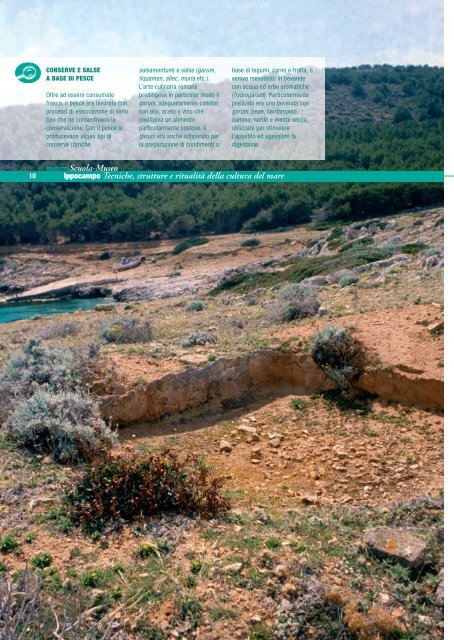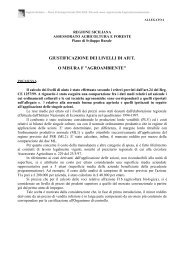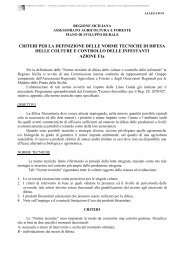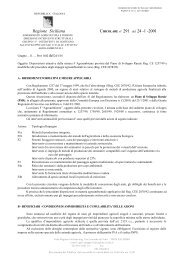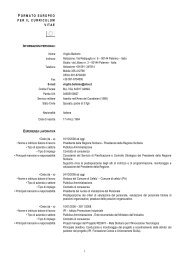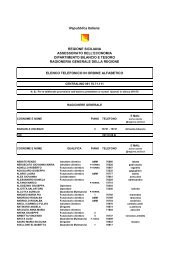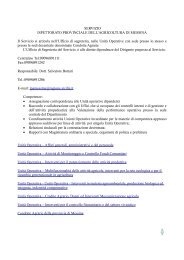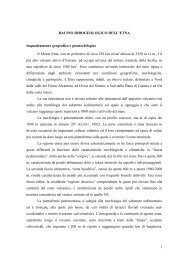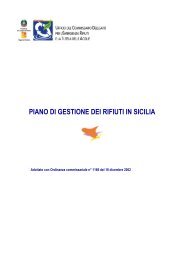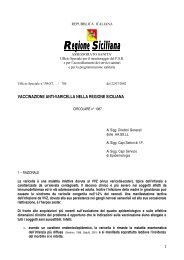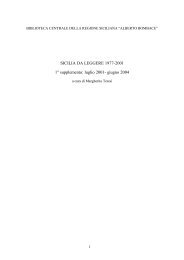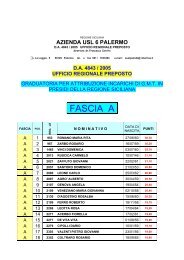PROGETTOScuola-Museo - Regione Siciliana
PROGETTOScuola-Museo - Regione Siciliana
PROGETTOScuola-Museo - Regione Siciliana
You also want an ePaper? Increase the reach of your titles
YUMPU automatically turns print PDFs into web optimized ePapers that Google loves.
10<br />
CONSERVE E SALSE<br />
A BASE DI PESCE<br />
Oltre ad essere consumato<br />
fresco, il pesce era lavorato con<br />
processi di essiccazione di vario<br />
tipo che ne consentivano la<br />
conservazione. Con il pesce si<br />
producevano alcuni tipi di<br />
conserve (tariche,<br />
salsamentum) e salse (garum,<br />
liquamen, allec, muria etc.).<br />
L’arte culinaria romana<br />
prediligeva in particolar modo il<br />
garum, adeguatamente condito<br />
con olio, aceto o vino che<br />
costituiva un alimento<br />
particolarmente costoso. Il<br />
garum era anche adoperato per<br />
la preparazione di condimenti a<br />
base di legumi, carne e frutta, o<br />
veniva mescolato in bevande<br />
con acqua ed erbe aromatiche<br />
(hydrogarum). Particolarmente<br />
prelibata era una bevanda con<br />
garum, pepe, cardamonio,<br />
cumino, nardo e menta secca,<br />
utilizzata per stimolare<br />
l’appetito ed agevolare la<br />
digestione.<br />
<strong>PROGETTOScuola</strong>-<strong>Museo</strong><br />
Ippocampo Tecniche, strutture e ritualità della cultura del mare


